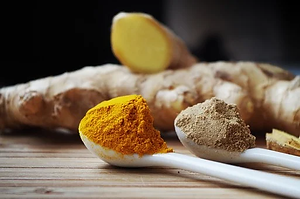
SPICES
A History of the Spice Trade
Learn about the spice trade in fewer than 500 words!
The glass jars of pepper, cinnamon and nutmeg sitting in your cupboard don’t do much to reveal their incredible history and the journeys they’ve taken to be at your disposal.
Around 1000 BC, the spice trade was the world’s largest industry and was responsible for the rise and fall of empires. Even though these spices today are relatively inexpensive and available at your local Tesco’s, spices were once tightly guarded and generated immense wealth for those who controlled them.
Did you know?
Nutmeg was once worth more by weight than gold.
The spice trade began in the Middle East over 4,000 years ago. The Arabs served as the controllers of the spice trade and created a sense of mystery by withholding their origins to ensure high prices by telling fantastic tales about fighting off fierce creatures to reach spices growing high on cliffs.
As shown in the image below, the spice trade was conducted largely on overland routes on what was called 'the Silk Road'.
The Silk Road was an important route connecting Asia with the Mediterranean world, including North Africa and Europe, and was a significant factor in the development of great civilisations such as China, India, Egypt and Rome.

The Roman Empire set up a powerful trading centre in Alexandria, Egypt in the first century BC and was in control of all the spices entering the Greco-Roman world for many years. During this time, spices were so valuable that Roman soldiers were frequently paid in salt, a practice that led to the word “salary” and the phrase “worth his salt”.
Did you know?
In 410 AD, when the Visigoths captured Rome, they demanded 3,000 pounds of peppercorns as ransom.
Eventually, in the mid thirteenth century, Venice became the centre of the spice empire in the Mediterranean and became extremely prosperous by charging huge tariffs to Europeans who had no direct access to Middle Eastern sources. These tariffs were so expensive that even the wealthy struggled to pay for spices.
At this point in the spice trade, the profits of the spice trade were as much as 500-600%!
In the fifteenth century, the spice trade was transformed by the 'European Age of Discovery' as navigational equipment improved and long-haul sailing became possible. Rich entrepreneurs even began acting as explorers in hopes of circumventing Venice by discovering new ways to reach the areas where spices were grown – several, such as Christopher Columbus in 1492 discovered new lands, such as the New World (even if he aimed for finding India) and new treasures, such as fruits and vegetables.
In 1501, Venice fell from being the European power of the spice trade, when Portugal became the first country to successfully circumnavigate Africa, reaching India! This success marked the beginning of the Portuguese Empire and for the rest of the sixteenth century, Portugal dominated the naval trading routes. However, as spices were such a hot commodity, more merchants from different countries wanted a share of the riches spices offered, and sparked bloody conflicts over control of the spice trade.
Did you know?
In the 16th century, London dockworkers were paid their bonuses in cloves.
The last major turning point in the history of the spice trade was in the seventeenth century when the Dutch took control of the East with the formation of the ‘East India Trading Company’ to rival England’s own ‘East Indian Company’. Once the Dutch gained control of Ceylon and the East Indies, they became the dominant power in European trade.
Eventually, in the eighteenth century, as spices became more common, their value began to fall, trade routes opened, merchants began to plant spice plants in other parts of the world, and the wealthy monopolies began to collapse. Pepper and cinnamon were no longer luxuries commodities, and spices lost the status and allure that once placed them alongside jewels as the world’s most valuable items.
By the Victorian era spices began to be used across different dishes and meals, providing a wonderful variety of exotic flavours, colours and smells.
Explore the Origins, History and Uses of Pepper, Cinnamon and Ginger in Victorian England here!
.png)
